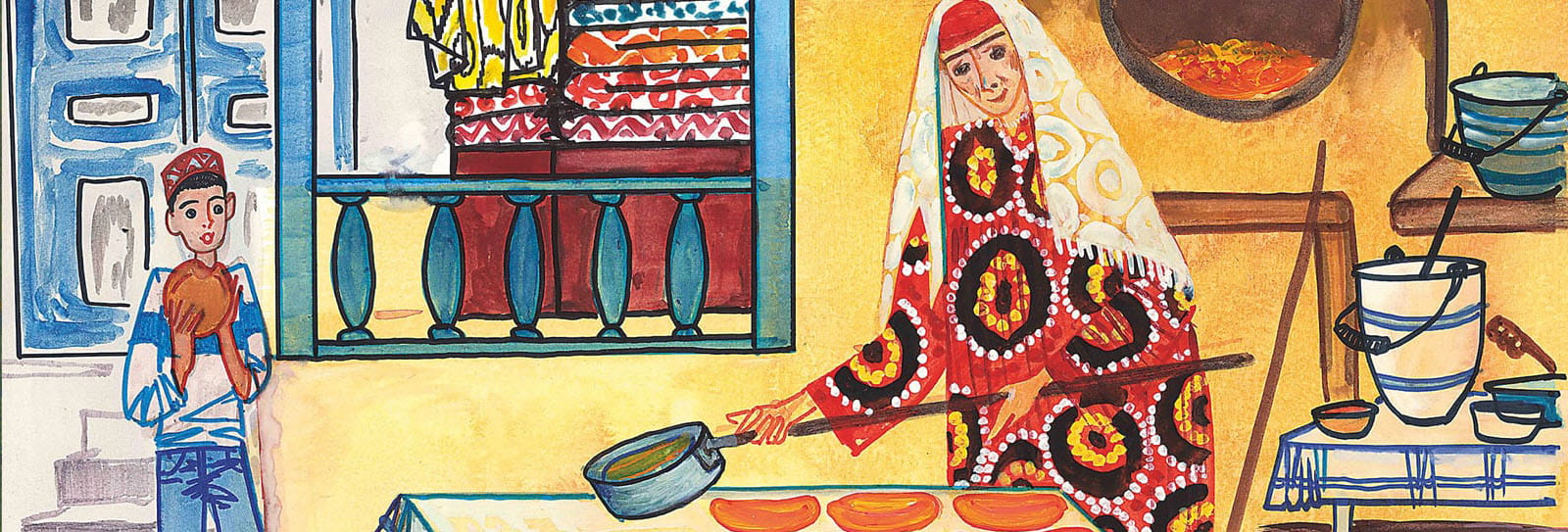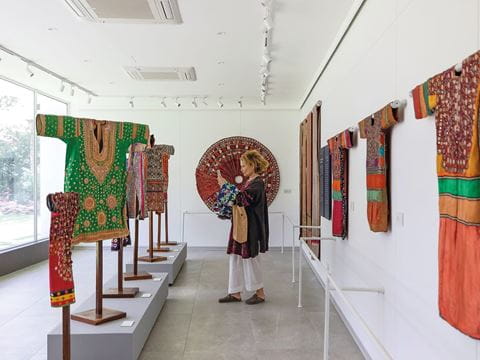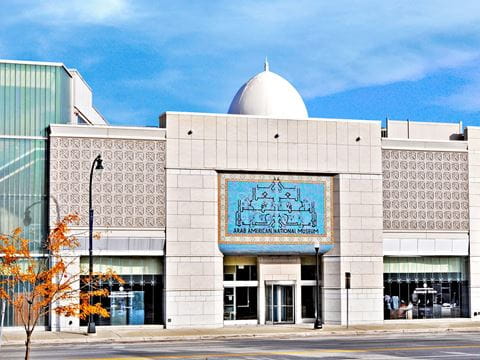
How a Story of Bread Became a Sharing of Culture: A Conversation With Marina Abrams
In this colorful, educational children's book, Marina Abrams summons her childhood memories along the Kazakhstan-China border, all brought to life and imagination by Tajik illustrator Farrukh Negmatzade.
In this colorful, educational children's book, Marina Abrams summons her childhood memories along the Kazakhstan-China border, all brought to life and imagination by Tajik illustrator Farrukh Negmatzade.
Although Abrams places young Barzu in the mountains of Tajikistan, the setting could be any kishlak (Tajik for village) in Central Asia, a region comprising that country and Kazakhstan, as well as Turkmenistan, Uzbekistan and Kyrgyzstan. Bicycling from kishlak to neighboring kishlak, Barzu visits friends and relatives who share stories of local culture such as harvesting apricots, (the orange in her book's title), the generational craft of making clay ovens, called tanoor in Tajik, and the region's distinctive "bread of wonder," called non in both Tajik and Uzbek, that remains edible for up to three years. Abrams, who now lives in the US, says she wrote Orange and Blue to share such stories of childhood and heritage with her own school-aged children, both born and raised in the US.
I wanted my children to know about the region. Here in the United States, I found very few books about Central Asia for children. This is actually a problem for many immigrant families from the Central Asian diaspora. It is very hard to preserve your cultural heritage when you are away from the region itself. So, started coming up with stories five or six years ago that I told to my son, which he loved. The first one I came up with was about bread of wonder that then became the heart of the book.
The culture and heritage of the region seems to thrive in the story without it pinpointing an area within the region, so can you tell us where Barzu's world is?
I didn't want to give very specific names to places. I wanted people from all five republics to feel attached to this story. Barzu could probably live in Tajikistan or Uzbekistan, right on the border. The (book's) City of Blue Domes is a composite of Bukhara, Samarkand, Khujand, Khiva (except for Khujand in Tajikistan, all are cities within Uzbekistan). But when we talk about the bread of wonder, this is from Samarkand.
Tell us about your focus on breadmaking and the apricot harvest.
This is daily life, and these are the first things you miss when you are outside the region. The bread culture is so rich, SO ancient, and every single aspect or stage of everybody's life is reflected in that culture: special breads for weddings, funerals, even when children are being born. Each non is a signature of that city or that region. Bread and tanoors (the traditional ovens) are strongly associated with mothers and grandmothers, and family connections.
It's those connections that bring my attention to a couple of illustrations. The first shows Barzu holding a loaf of bread and a woman laying out bread from the oven. What is happening there?
Barzu's grandmother is taking out (from the tanoor) freshly baked bread. This is a traditional house in either Uzbekistan or Tajikistan or Kazakhstan. You see the oven and a veranda with a pile of mattresses (kurpacha in Tajik) that every house has. People use them for guests; they sit on them on the floor. And of course, Barzu, who just got the bread, which is most delicious when it comes out of the oven. When people from the region see this illustration, they love it.
How about the illustration of the men who are standing by their tanoors?
These are several generations of one family (of tanoor makers on masters called ustos in Tajik and Uzbek). In Central Asia for any craft, whether it is embroidery or ceramics or woodcarving, it's very often that the secrets and the skills are passed on from generation to generation. And it is the same with the tanoor master.
You may also be interested in...

Nasreen ki Haveli: Pakistani Textile Museum Fulfills a Dream
Arts
Collector Nasreen Askari and her husband, Hasan, have turned their home into Pakistan’s first textile museum.
Spotlight on Photography: Drinking in Türkiye’s Coffee Culture
Arts

‘Home’: Arab American National Museum Celebrates 20th Anniversary
Arts
Arab American National Museum Director Diana Abouali says the facility—which is marking its 20th anniversary in 2025—in Dearborn, Michigan, has aimed to create a home for Arab Americans by preserving and presenting the history, culture and contributions of Arab immigrants as well as their native-born children and grandchildren.


